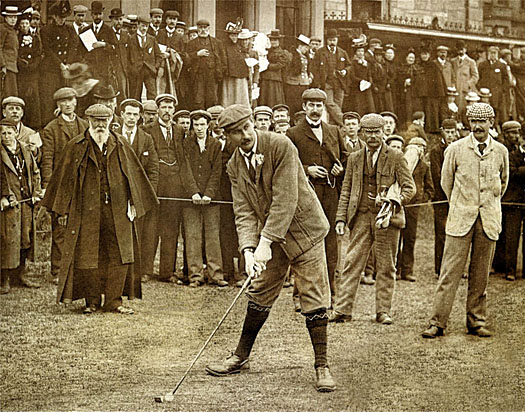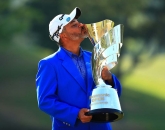
Vardon’s cool composure filtered throughout his game. He once said: “To play well you must feel tranquil and at peace. I have never been troubled by nerves in golf because I felt I had nothing to lose and everything to gain. Oh, one piece of advice: Never concede the putt that beats you.”
Vardon went to the United States to play 80 exhibition matches and won over 70, finishing with a flourish – a triumph at the US Open. Now a household name both in the UK and the US, Vardon would draw in huge crowds to his exhibitions. One seven year-old spectator at a Boston superstore was a certain Francis Ouimet, who would later famously beat Vardon in a play-off for the US Open in 1913. As Ouimet related in the 1963 film documentary at Brookline, “Vardon was a picture player. He played with a beautiful swing, beautifully balanced.”
In 1901 Vardon became a founder member of the Professional Golfers Association and in 1903, he duly became its Captain.
In the same year, Vardon won The Open again, with his brother Tom finishing in second. After the jubilation, however, came a real blow. Vardon contracted the so-called white plague - tuberculosis - and duly signed himself into the Mundesley Sanatorium in Norfolk to recover.
Many historians refer to the next seven years as Vardon’s gap years when ill health kept him from his best golf. In truth Vardon checked himself out the sanatorium when strong enough and won tournaments in 1906, 1907, 1908 and 1909. He also designed six new golf courses across England and Wales and wrote a best-selling book, The Complete Golfer. In the following seven years, the book was reprinted 13 times, such was Vardon’s popularity.
Pages
Click here to see the published article.











